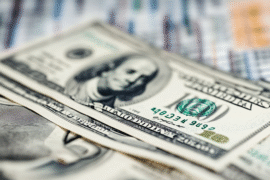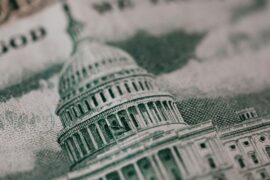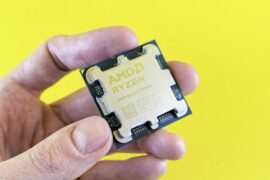This article may contain references to products or services from one or more of our advertisers or partners. We may receive compensation when you click on links to those products or services. Nonetheless, our opinions are our own.
Key Highlights
- Preferred stocks give better returns than regular bonds and common stocks. This makes them appealing to investors who want income.
- These investments mix parts of both stocks and bonds. They include ownership in a company and stable dividend payments.
- The prices of preferred stocks can change, especially when interest rates go up or down.
- It’s important to diversify. Exchange-traded funds (ETFs) offer a way to invest in several preferred stocks at once.
- It’s also important to understand tax rules. Preferred stock dividends can be treated better than bond income when it comes to taxes.
Introduction
Finding a stable income source today can be hard. That’s why preferred securities are becoming popular. They offer steady dividend payments. This makes them a good choice for investors who want regular returns. When the Federal Reserve changes interest rates, bond yields change too. This makes people more interested in preferred stocks. This guide looks at the benefits, risks, and best chances in high-yield preferred stocks.
Understanding Preferred Stocks
Preferred stocks are often called “hybrid” securities. This is because they have features from both common stocks and bonds. Like common stocks, they show ownership in a company and are bought and sold on stock exchanges. However, different from common stocks, preferred shares usually do not have voting rights.
The main thing that makes preferred stocks different is their dividend payments. These payments are usually set amounts, like bond coupon payments. They provide a steady source of income. Preferred stock dividends are often more than those of common stocks. This makes them very appealing to people who want regular income.
Defining Preferred Stocks and Their Special Features
Preferred stocks are called that because they have a higher priority than common stocks when it comes to dividends and money after liquidation. People who own preferred stocks get paid dividends before those who own common stocks. If the company runs into money problems, preferred stockholders can get back some of their investments more often than common stockholders.
Preferred stocks usually have a par value. This is their starting selling price. Even if market prices change, they stay closer to the par value than common stocks. This gives them some stability.
One main benefit of preferred stocks is their high dividend yield. This yield often exceeds that of common stocks. Because of this, preferred stocks are very appealing to income investors who want steady payouts.
Why High-Yield Preferred Stocks Attract Investors
High-yield preferred stocks attract investors for several reasons. First, they usually offer better returns than regular bonds and stocks that pay dividends. This makes them a good choice for those looking to earn more income.
Also, investors who want to spread out their money may gain from preferred stocks or ETFs that focus on income sources. Adding different kinds of income-making assets can make a more balanced mix of investments with less risk.
Preferred stocks are in between debt and common stocks in a company’s funding. They are safer than common stocks, but they have a lower claim than bondholders. It’s important for investors to understand these details.
Looking at the Good Reasons to Invest in High-Yield Preferred Stocks
Preferred stocks are known for paying regular dividends. This can give a steady income over time. They also provide higher returns than most bonds. This makes them appealing when interest rates change.
Income Stability and Predictability
A big benefit of high-yield preferred stocks is that they provide a steady and predictable income. Unlike common stock dividends, which companies can change or stop at any time, preferred stock dividends are usually set in place.
For retirees and people who focus on income, this predictability is very helpful. It makes planning with money easier and helps keep cash flow steady. This is important even during tough times when common stock dividends might be lower or stopped.
In many cases, preferred stocks give higher returns than bonds with the same credit ratings. This extra income makes them a good choice for cautious investors.
Preferential Tax Treatment in the United States
Preferred stocks can offer tax benefits, especially for dividend payments. Unlike bond interest, which you pay regular income tax on, many preferred stock dividends are taxed at the lower rates for qualified dividends.
For investors who pay high taxes, this tax help can change their after-tax returns a lot. But investors with tax-friendly accounts (like IRAs) might not see this feature as useful. Talking to a money advisor can help you understand the tax effects for your specific situation.
Identifying Risks and Challenges
Preferred stocks have benefits, but they also carry risks. The biggest risks are their sensitivity to changes in interest rates and economic downturns. These can influence dividend payments and stock prices.
Interest Rate Sensitivity and Market Volatility
Preferred stocks react strongly to changes in interest rates. When interest rates go up, their set dividends seem less desirable, and this makes their prices fall. On the other hand, when rates go down, preferred stocks look more attractive, which causes their prices to rise.
The Federal Reserve’s policy does a lot to change how preferred stocks perform. Investors need to think about how changes in interest rates might impact their portfolios. This is especially true if they depend on preferred stocks to earn income.
During times when the market is uncertain, preferred stocks, especially those from banks or other financial groups, can see more ups and downs.
The Effect of Economic Declines on Preferred Stocks
During good economic times, companies usually can pay their preferred stock dividends without any trouble. However, during tough times or recessions, companies that have cash flow problems might stop or lower their dividend payments.
For example, during the 2008 money crisis, several banks stopped paying preferred stock dividends. This affected investors who needed these payments for income.
To reduce this risk, investors should look into the issuing company’s financial condition and past dividend payments. Picking preferred stocks from strong companies can help limit losses when the economy is struggling.
Investing in high-yield preferred stocks may feel tricky, but with a good plan, investors can manage this market well. It is important to know the basics, set clear investment goals, and do thorough research.
What You Need to Get Started
Before putting money into preferred stocks, investors should:
- Set Investment Goals: Decide if you want to create a steady income or grow your capital.
- Understand Risk: Know how preferred stocks fit into your overall investment plan and how much risk you can take.
- Use Research Tools: Websites like Morningstar give helpful details about preferred stocks, such as credit ratings, yields, and the financial health of the issuers.
- Diversify Holdings: Look into preferred stock ETFs or mutual funds to lower risk and get a feel for the market.
Step 1: Understanding Your Investment Goals
Before choosing preferred stocks, investors need to set their goals. Are they looking for a steady income for retirement? Or do they want both income and growth in value?
Investment time horizon is very important. Preferred stocks change with interest rates. Long-term investors can handle short-term price changes better.
Step 2: Researching High-Yield Preferred Stocks
Careful research is very important when choosing preferred stocks that have high returns. You should think about these factors:
- Company’s Money Health: Companies with strong finances are more able to keep paying dividends.
- Credit Scores: Groups like Moody’s and Standard & Poor’s look at the risk that comes with preferred stocks.
- Industry Mixing: Don’t focus too much on one industry to lower the risk overall.
- Preferred Securities Funds: These funds offer wide reach and expert management.
Conclusion
High-yield preferred stocks give investors a good mix of income and stability. This makes them a nice option instead of bonds and common stocks. But they do have risks. They can be sensitive to interest rate changes and tough times in the economy.
By using a clear plan—setting investment goals, studying issuers, and spreading out holdings—investors can get the most out of preferred stocks and keep risks in check. If you want steady income or growth over time, high-yield preferred stocks can really boost your investments.
Frequently Asked Questions
What Qualifies a Preferred Stock as “High Yield”?
A preferred stock is thought of as “high yield” when its dividend yield is much higher than the average in the market. But higher yields can bring more risks. These risks include being more affected by changes in interest rates or problems with the company that issued the stock.
How Can I Start Investing in Preferred Stocks?
To start investing in preferred stocks, you can buy individual preferred shares from strong issuers. You can also invest in preferred stock ETFs to get a mix of options. Websites like Morningstar offer details about issuer finances, credit ratings, and dividend histories to aid your research.
Are Preferred Stocks Riskier Than Bonds?
Yes, preferred stocks usually carry more risk than bonds. They rank lower in a company’s capital structure. This means they are more likely to have dividend cuts when there is money trouble. However, they offer higher returns, which can make them appealing for investors looking for income.
Should I put my money into individual preferred stocks or ETFs?
If you want to invest in many different stocks without doing too much research, preferred stock ETFs could be a good option. ETFs let you invest in several preferred stocks. This lowers the risk from any one company. Individual preferred stocks might give you more income, but you need to do careful research to check their money health.

Reviewed and edited by Albert Fang.
See a typo or want to suggest an edit/revision to the content? Use the contact us form to provide feedback.
At FangWallet, we value editorial integrity and open collaboration in curating quality content for readers to enjoy. Much appreciated for the assist.
Did you like our article and find it insightful? We encourage sharing the article link with family and friends to benefit as well - better yet, sharing on social media. Thank you for the support! 🍉
Article Title: Best Preferred Stocks with High Yields Right Now
https://fangwallet.com/2025/02/18/best-preferred-stocks/The FangWallet Promise
FangWallet is an editorially independent resource - founded on breaking down challenging financial concepts for anyone to understand since 2014. While we adhere to editorial integrity, note that this post may contain references to products from our partners.
The FangWallet promise is always to have your best interest in mind and be transparent and honest about the financial picture.
Become an Insider

Subscribe to get a free daily budget planner printable to help get your money on track!
Make passive money the right way. No spam.
Editorial Disclaimer: The editorial content on this page is not provided by any of the companies mentioned. The opinions expressed here are the author's alone.
The content of this website is for informational purposes only and does not represent investment advice, or an offer or solicitation to buy or sell any security, investment, or product. Investors are encouraged to do their own due diligence, and, if necessary, consult professional advising before making any investment decisions. Investing involves a high degree of risk, and financial losses may occur including the potential loss of principal.
Source Citation References:
+ Inspo











































